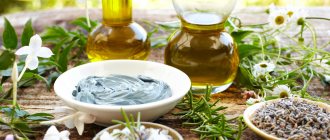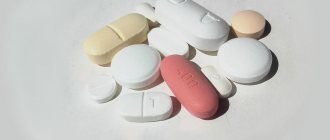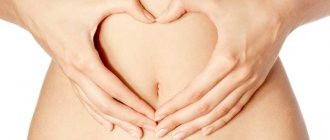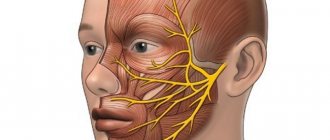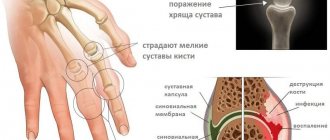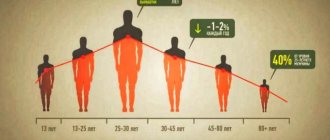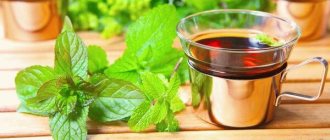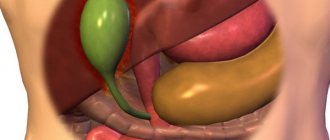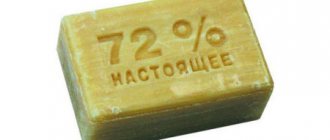Age-related restructuring of the female body is a natural process; it is associated with the attenuation of reproductive function against the background of hormonal changes. It is the decrease in concentration levels and imbalance of hormones that cause the unpleasant symptoms and signs of menopause. Such a hormonal imbalance cannot be called a disease, since we are talking about the attenuation of reproductive function. Every woman goes through this stage sooner or later. But it comes with:
- unpleasant symptoms;
- age-related changes;
- decreased immunity, which increases the risk of developing various diseases.
The main task during such a period is to help the body cope with all manifestations of hormonal changes. There are a number of medications and proven treatment tactics for this. For opponents of hormonal drugs, there is a good solution - treating hot flashes during menopause with folk remedies. Hot flashes are the most common symptom, but they are often combined with other characteristic symptoms of menopause. Traditional medicine has long been using natural resources; there are many ways to cope with unpleasant symptoms. They will be discussed in this article.
About menopause: symptoms, age, treatment
Menopause in women is usually divided into 3 stages:
- premenopause (begins at 40-45 years);
- menopause (normally from 45 years);
- postmenopause (maximum duration - up to 75 years).
The first phase is the beginning of the restructuring, it lasts several years, is characterized by changes in hormone levels and, as a result, disruption of the menstrual cycle. The second lasts a year from the moment of the last menstruation, the third – 5 years and up to 70-75 years. It is the first 2 stages that bring women the most unpleasant sensations and conditions. After a permanent cessation of menstruation during the menopausal period, the body gradually gets used to the new hormonal levels.
The symptoms of the first stages of body restructuring are quite diverse; the most common complaints are:
- manifestations of hot flashes (sudden fever followed by chills);
- lack of air (hyperventilation syndrome);
- insomnia;
- various headaches (often migraine type), dizziness, fainting;
- psycho-emotional disorders, etc.
In total, there are about 70 variants of manifestation of hormonal imbalance at this time (you can read in detail about the causes of such manifestations and symptoms of menopause in women in the general article about menopause in women).
The fight against menopause is an opportunity to cope with unpleasant symptoms. It should be understood that no means (hormonal, medications, etc.) can be used to “undo” the changes in the body inherent in a given age. Treatment involves assistance in the process of hormonal changes and alleviation of the general condition. And traditional medicine is an excellent assistant in this matter.
Getting rid of the most common symptoms that are observed during menopause in women is the main task of traditional and alternative medicine. Since this period is accompanied by psycho-emotional disorders, weakened immunity, the development of hormone-dependent diseases (diabetes mellitus, obesity, thyroid pathologies, etc.), and later by age-related changes, help for the female body is simply necessary. Folk remedies for menopause relieve symptoms well and make it possible to avoid most negative manifestations and consequences.
How to determine that menopause has occurred?
In order to begin searching for folk remedies for menopause in order to treat any unpleasant symptom, you need to know what causes it to appear.
Therefore, it would not be amiss to point out how it manifests itself in women. The period when menstrual bleeding stops for a year is called menopause. About two years before this, a woman may notice a disruption in her cycle, it may become shorter, and the discharge may be scanty. This is due to the fact that the body begins to produce less of the hormone estrogen. Timely treatment of menopause symptoms with folk remedies allows for a smooth transition from one stage of maturity to another.
https://youtu.be/ezllAEVsj6U
This is fraught with the fact that many diseases are activated that previously did not make themselves felt: osteoporosis, diabetes, diseases of the cardiovascular system. The biological rhythm may be disrupted (many note the appearance of insomnia), arrhythmia may develop, mood swings, increased fatigue, sweating and weakening of memory may occur.
Realizing why these symptoms arise, the question does not arise of how to get rid of menopause using folk remedies. After all, this is a natural state of any woman, and not a disease.
Women who continue to be sexually active may notice a decrease in libido and vaginal dryness. Most often at this stage there is a sharp increase in weight, which is difficult to reduce, the skin becomes less elastic and firm, the hair loses its shine and falls out. This is all due to changes in hormonal levels and lack of ovulation. In the ovaries, follicles no longer mature and connective tissue forms in their place, and they themselves decrease in size.
Medicinal herbs to help
Elimination of symptoms during menopause with the help of herbal medicine works well with the help of:
- infusions and tinctures;
- decoctions;
- teas from various herbs;
- medicinal fees.
It should be understood that using plants at home is effective, but self-medication is also unacceptable, as when using medications. Many symptoms are caused by hormonal changes, but hormone levels can only be determined by laboratory tests.
Contact your doctor for advice. Gynecologists are well aware of the effect of various plants on the body and themselves recommend the use of herbs during menopause. Your doctor will help you choose a herbal medicine option based on an examination and determine which methods will be most effective. In gynecology, folk methods are actively used that help reduce hot flashes, reduce their frequency, and get rid of insomnia (women are often tormented by night attacks). And also relieve nervous tension and stabilize the psyche, which is important during menopause.
Various plants help relieve unpleasant symptoms. Let's look at the most effective folk recipes that help with hot flashes:
- Oregano during menopause: reduces fever, normalizes sleep, acts as a sedative. The infusion is prepared within 8-12 hours (preferably in a thermos) in the proportion of 1 tbsp. l. for 1 cup boiling water. You should drink it daily, 2-3 times a day. Instead of infusion, you can use a decoction prepared in a water bath or an alcohol tincture.
- Hawthorn during menopause acts as a cure for hot flashes, tones blood vessels, which helps improve cerebral blood supply and normalize heart rhythms. For a glass of boiling water, 5 g of plant (fruits, flowers, fresh or dry) is enough. Drink before meals 3 times a day like tea. If you want, drink hawthorn tincture with alcohol. Fruit juice and alcohol in a 1:1 ratio are mixed and infused for 2 weeks in the dark. Take 40 drops 3 times a day.
- Dill is known for its ability to relieve frequent hot flashes and normalize sleep. You can make dill water (0.5 liters of boiling water per 3 tablespoons of dry seeds) and drink half a glass daily after meals for a month, 3 times a day. You can eat a teaspoon of chopped dill in the morning on an empty stomach as a sedative.
- Sage is known for its healing properties. It is recommended for menopause due to hot flashes, insomnia, dizziness, headaches and increased nervousness. For 2 cups of boiling water, a tablespoon of the plant is required; the infusion is consumed as needed during the day.
- St. John's wort during menopause is recommended as a stabilizer of the vegetative nervous system and a general tonic. An infusion is prepared (200 ml of boiling water: 1 tbsp) or vodka tincture (a liter jar is completely filled with dried herbs and filled with vodka for 21 days). The infusion is taken one tablespoon before meals 3 or 4 times a day, the tincture is taken 20-40 drops daily 2-3 times.
- Veronica dubravnaya is good for headaches and dizziness. The decoction is prepared in a proportion of 3 tbsp. boiling water for 2 tbsp. l. herbs and drink before meals.
- Peony tincture during menopause acts as a sedative and relieves tension, reduces the frequency of hot flashes, and relieves profuse sweating. You can buy a ready-made pharmacy alcohol tincture and take 40 drops three times a day. If you increase the dosage to 3 tsp, it is used as a sleeping pill and taken once at night.
- Mistletoe: A well-known folk tonic with a hemostatic effect. The infusion is prepared in the proportion of 1 tbsp. l. per 500 ml of boiling water, taken in small portions. This is important because mistletoe is a poisonous plant; overdose is unacceptable.
- Shepherd's purse: an infusion of this plant has a hemostatic, anti-inflammatory and blood purifying effect. Pour boiling water over 1 tbsp. l. herbs, the infusion is filtered and the whole glass is drunk at once.
- Motherwort is used as a sedative during menopause. Additionally, it will help stabilize menstruation and reduce the frequency of hot flashes. you need to drink 50 ml of infusion (proportion 2 tablespoons per 2 cups of boiling water) three times a day.
- Valerian is a known sedative. Dried crushed root (a tablespoon) is brewed with a glass of boiling water. They drink according to Art. l. several times daily as needed.
Folk remedies for hot flashes during menopause and other unpleasant symptoms of this period are not limited to the recipes listed. Many of these plants are used in preparations. There are other ways to help a woman during menopause. Therefore, we will continue to consider options for folk recipes.
How else can you reduce the effect of hot flashes?
You can protect yourself from hot flashes during menopause if you know how to behave correctly during it. When dealing with hot flashes, you need to adhere to the following fairly simple rules:
- If you feel that another attack is about to begin, then you should immediately put panic aside. Try to breathe as deeply as possible: inhale not with your diaphragm, but with your stomach. Breathe deeply and slowly. In addition to alleviating the attack, this will help you normalize the state of your nervous system.
- During menopause, a woman should receive a normal amount of air, so during an attack, go to an open window or even go outside, if possible.
- Have a bottle of cool water with you so you can take a sip if necessary and cool down a little. During menopause, you generally need to drink a sufficient amount of liquid, at least two liters per day, and this should be water, and not juices, teas, soups, etc.
- Buy clothes only from natural fabrics. Dress so that if something happens you can undress or at least unbutton the top layer of clothing.
Thus, traditional medicine makes it possible to get rid of hot flashes for those who are not helped by medications and require additional treatment of hot flashes during menopause with folk remedies.
Therapeutic baths
Baths have always been used to relax the body. Since hot flashes are often accompanied by excessive sweating, issues of personal hygiene become especially relevant for women during menopause. To make water treatments even more effective, add herbal decoctions to your bath. To achieve a state of relaxation, the water should not be too hot. The body is already experiencing serious overloads; it does not need additional ones.
The effect of taking a bath will be better if you combine the hygiene procedure with folk methods of relieving the symptoms of menopause. Plants have a positive effect on the body, so it is better to take healing baths regularly.
Consider the recommendations of traditional medicine:
- Geranium oil can alleviate the condition during hot flashes in patients with hypertension, and also has a calming effect. Oil in an amount of 5-7 drops is mixed with sea salt for a bath.
- Herbal decoction. Sage, oregano, yarrow, calamus root, thyme and pine buds are mixed in equal parts with wormwood (they take 3 times more of it than other components). For 3 liters of hot water you will need 10 tablespoons of the mixture, you need to boil the broth for 10 minutes, after which it is added to the bath.
- Valerian. 100 g of root is poured with boiling water and boiled for several minutes, then added to the water. If desired, the decoction is replaced with 2 bottles of ready-made pharmacy tincture.
- Linden blossom. A handful of the plant is boiled in a water bath, after which it is added to the water.
Royal jelly
How to reduce unpleasant symptoms using apitherapy? Beekeeping products will be an excellent folk remedy for menopause:
- Royal jelly will help with hormonal regulation and relieve most unpleasant symptoms (hot flashes, insomnia, autonomic disorders, nervousness);
- pollen serves as a source of many minerals, increases hemoglobin and stimulates hematopoiesis;
- beebread (pollen drenched in honey) improves metabolism and improves immunity, and also relieves nervousness;
- Honey dissolved in water relieves insomnia. To relieve unpleasant symptoms, you can mix honey and beet juice (1:1). A tablespoon of the mixture 3 times a day after meals will help normalize the functioning of the endocrine system. Honey (0.5 cup) mixed with apple cider vinegar (3 tsp) will help with insomnia; take 2 tablespoons before bed.
How to eliminate uterine bleeding
Bleeding during menopause is often a sign of pathologies. Sometimes a small amount of ichor is released, and only a specialist can determine the cause. Traditional medicine for menopause is effective in combination with therapy prescribed by a doctor. Useful herbal tea:
- oak bark - 5 g;
- nettle leaves - 15 g;
- bird knotweed - 25 g;
- chamomile - 5 g.
All components are mixed, take 2 tbsp. l. raw materials and pour 1 liter of boiling water. Leave for 5 minutes, then place on low heat, bring to a boil and simmer for 10 minutes. Infuse the decoction for an hour, strain and drink 3 or 4 times a day before meals. Recommended serving: 1-2 tbsp. l.
Bloody discharge during menopause leads to potassium deficiency. To replenish it, it is useful to consume a vitamin mixture prepared from honey and fruits:
- honey - 100 g;
- dried apricots - 100 g;
- light raisins - 50 g;
- dried prunes - 100 g;
- unpeeled lemon - 1 pc.
The fruits are put through a meat grinder, honey is added and everything is mixed. Take 1 tbsp. a spoonful of the mixture in the morning and the same amount in the evening.
Juice therapy
Juices are considered the best traditional medicine. They serve as a source of vitamins, minerals, and affect the general condition of the body. To relieve the symptoms of menopause, it is recommended:
- Vegetable juices (contain phytoestrogens). For menopause, beetroot, cucumber, carrot, and celery juices are recommended individually or in mixed form. Proven folk recipes: carrots, celery, spinach, parsley in a ratio of 7:4:3:2. Another option: carrots, beets, cucumber, kiwi in a ratio of 10:3:3:1.
- Fruit juices can also be considered as sources of substances beneficial to the body. But it is better to replace them with fresh fruits, since they have a lower concentration of glucose and fructose than freshly squeezed juice.
- Juice from 2 small beets strengthens the immune system. They are mixed with oranges (2 pieces) crushed together with the peel and 1 lemon. Add 1 tsp. honey and consumed before meals twice a day.
- Juice from carrots and horseradish (take 300 g of raw vegetables), 1 large lemon. The mixture is seasoned with 300 g of honey and drunk 3 tsp. before eating. This mixture relieves hot flashes.
What are tides?
This condition is familiar to almost all women who are experiencing menopause. At the most seemingly inopportune moment, she experiences a sharp feeling of heat, sweat appears on her body and perspiration appears. After the tide stops, the woman begins to feel chills.
Such phenomena can occur even before the onset of menopause itself, approximately 2-3 years before its full onset. This happens because hormonal imbalances occur during menopause. Problems also occur with those hormones that are responsible for heat exchange. In addition, during menopause, a woman’s nervous system is not in the best condition, which only increases sweating.
In addition to fever, symptoms such as insomnia, deterioration of immunity are observed, and with this the risk of developing additional diseases, tumors, osteoporosis and the entire musculoskeletal system.
Other folk remedies for menopause symptoms
To help the body during menopause, a woman can use a variety of traditional methods of therapy. Plants are an effective means of treating menopause; nature offers many tools for relieving unpleasant (and sometimes dangerous) symptoms.
It is worth remembering that any folk remedy for menopause is a medicine, so the infusion or collection taken should be used after consultation with a gynecologist and not violate the recommended dosage regimen and recipe. Let's find out what symptoms can be relieved with herbal medicine.
To treat hot flashes you can use:
- Snake root (cohosh). Decoctions of this plant are prepared in 8 minutes. Take a teaspoon of roots per 200 ml of water and cook over low heat, and then leave for 2 hours. This is a daily portion, which is divided into 4 times.
- During menopause, hop cones also help fight hot flashes. 20 g is poured into a glass of vodka and left for 7 days. Hops are taken 5 drops 2 times a day.
- Herbal tea will help get rid of heat during hot flashes. It is recommended to mix lemon balm, thyme and blackberry leaves in equal parts. Brew 1 teaspoon per glass of water.
- An infusion of a mixture of blackberry leaves, motherwort, fragrant woodruff (a teaspoon each) and marsh dry land and hawthorn (half each) helps to get rid of hot flashes. For 500 ml of boiling water you will need 1/10 of the mixture.
- Shiitake mushroom tincture (5 g per glass of vodka) relieves symptoms well. After a week, you can drink 5 drops twice a day.
- Walnut baffles will also help reduce the number of hot flashes. To prepare, you will need partitions of five nuts, which are poured with 200 ml of cold water overnight. In the morning, the mixture is boiled for several minutes, filtered and drunk on an empty stomach.
- Red rowan is good for hot flashes; a tincture is prepared from it (a glass of berries per glass of vodka) and infused in the refrigerator for a month. Take 1 tsp. for the night.
Traditional methods for treating excessive sweating:
- Juice of fresh sage leaves, tea or decoction of sage, horsetail and valerian (in a ratio of 3:1:1) helps against sweating during menopause.
- Hyssop will help reduce sweating. A freshly prepared infusion (half a teaspoon per 100 ml, brewed for an hour) is drunk twice a day.
- A collection of horsetail, valerian, chamomile, oak bark and sage (1:1:2:2:3) helps with hyperhidrosis. Take 1 tbsp per glass of boiling water. spoon of the mixture and leave for 20 minutes. Divide into 3 servings and drink throughout the day.
General strengthening effect (to improve the functioning of the cardiovascular system, strengthen the musculoskeletal system, the nervous system, eliminate weakness).
- Stinging nettle. Flowers and leaves (2 tablespoons) are poured with boiling water (200 ml) and left for 20 minutes. Drink a glass 3 times before meals.
- Turnip decoction (1 grated fruit is boiled for 15 minutes in 3 cups of boiling water) cold, half a cup 4 times a day helps normalize the heart rate.
- Cornflower flowers to relieve symptoms of heart palpitations. For 200 ml of boiling water you need 3 tsp. Drink before meals 3 times a day.
- 20 g each of chamomile, celandine, yarrow and cinquefoil. Drink half a glass twice a day of the prepared infusion (for 200 ml of boiling water, a tablespoon of the mixture).
Remedies for insomnia during menopause.
- Motherwort, oregano, thyme (1 tsp each) and sweet clover + valerian (half each) are brewed and drunk 100 ml before meals.
- Before going to bed, you can drink half a glass of infusion of hops and valerian (one tablespoon).
- Linden tea is consumed daily for 1.5-2 months (a teaspoon per glass of boiling water).
- Among the medicinal preparations for insomnia and hormonal imbalance, a mixture of sage, hop cones, chamomile, calendula, rose hips, buckthorn bark, motherwort (ratio 1:1:2:2:3:4:5) works well. For a liter of boiling water you need 2 tbsp. l. Drink half a glass 3 times.
- Herbal mixture of mint, hawthorn, fireweed, chicory root, lemon balm (ratio 2:2:2.5:2.5:3). A tablespoon is required for 200 ml of boiling water. Before meals, drink a third of a glass.
Mint is good for migraines. For 1.5 tsp. plants will need 0.5 liters of boiling water, you need to drink 100 ml 3 times a day.
Plants that contain phytoestrogens will help reduce the symptoms of menopause. Flax seed during menopause, alfalfa, soybeans, red grapes, and licorice serve as their sources. Eating them (for example, using flaxseed oil) helps correct hormonal imbalances. Flax seeds and other sources of phytoestrogens are natural substitutes for hormone-containing drugs.
- Chaga mushroom is recommended for menopause as a general strengthening plant that stabilizes the heart rate and restores the functioning of the nervous system. Recommended for painful menopauses as a means of stimulating the action of estrogen.
- Calamus root during menopause will help lower blood pressure, normalize sleep and strengthen the nervous system. The dry root can be ground into flour and consumed one teaspoon at a time. before meals or make a decoction (tbsp per 1 liter of water).
- During menopause, cranberries can be consumed fresh, as a decoction, fruit drink, or tincture. It is a source of many vitamins and minerals; the berry helps control weight and has a tonic effect.
- Succinic acid ensures the functioning of the body at the cellular level. Its deficiency manifests itself as general weakness and fatigue. Replenishing the required amount of this acid will help maintain youth for as long as possible. Sources: lactic acid and seafood, rye bread, low-fat cheese.
Red clover during menopause
The composition of red clover is rich in phytoestrogens, of which it contains 10 times more than soybeans. These plant substances help a woman’s body self-regulate during menopause. In addition, clover is good for the health of the heart muscle, respiratory system,
prevents breast cancer.
In addition to phytoestrogens, clover contains other biologically active substances, and also has an impressive mineral composition - potassium, selenium, magnesium, chromium, phosphorus and other minerals necessary for humans. A glass of red clover infusion contains more calcium than milk. Red clover also contains vitamins and antioxidants, including retinol and vitamin C.
Beneficial properties of clover for the body:
- Diuretic, expectorant, astringent;
- Restores sexual activity of women during menopause;
- Normalizes sleep and improves well-being;
- Reduces skin dryness, restores the protective barrier of mucous membranes;
- Helps reduce hair and nail fragility.
Red Clover Infusion
Pour two tablespoons of dry herb into a glass of boiling water and leave in a thermos for 8 hours. Then filter and take 1/4 cup daily half an hour before meals until the condition normalizes.
Does red clover help with menopause?
The effectiveness of red clover during menopause has been proven by medical research. More than a hundred women took part in the experiment and were given red clover extract in capsules to their food. Noticeable improvements in the condition of the skin and hair, normalization of sleep and general well-being, and a decrease in the negative manifestations of menopause, including neurological ones, were found.
Red clover was successfully tested in a placebo test. One group of women took two capsules of clover daily, and the other took a placebo. After three months of treatment, the groups were changed after a seven-day washout period had passed. At the end of the experiment, improvements were found in the condition of women, their skin, nail plates and hair, increased stamina and quality of sleep, and normalized urination. Participants in the experiment also noted an improvement in their well-being.
Contraindications to traditional medicine
It should be understood that treating menopause with folk remedies is the same therapy as drug treatment. Therefore, when using folk remedies it is necessary:
- the doctor's consultation;
- compliance with its recommendations;
- checking the compatibility of herbal decoctions and infusions;
- absence of contraindications, concomitant diseases and individual intolerance.
Uncontrolled use of traditional medicines can lead to the most negative consequences. One or another symptom can be cured if natural resources are used correctly.
How not to lose hair
If hair falls out in large quantities, and patches of baldness appear on the head, you need to be examined by a doctor and undergo a therapeutic course, possibly in combination with physiotherapy. When the problem is not so severe, you can help yourself by adjusting your diet. Products that should be on the table every day:
- nuts;
- seafood;
- legumes;
- seeds;
- fish.
During menopause in women, treatment with folk remedies helps stop hair loss if the cause lies in a lack of vitamin B. Using tests, you need to determine whether there is such a problem and take a course of vitamin preparations. The doctor may also prescribe herbal remedies, ointments and other herbal preparations. It is useful to rub oils and plant extracts into the growth areas of hair follicles:
- jojoba;
- burdock;
- creeping thyme;
- cedar;
- regan;
- Bogorodskaya grass.
Homemade and factory-made hair masks will help. It is better to refrain from coloring, curling and hard styling.
